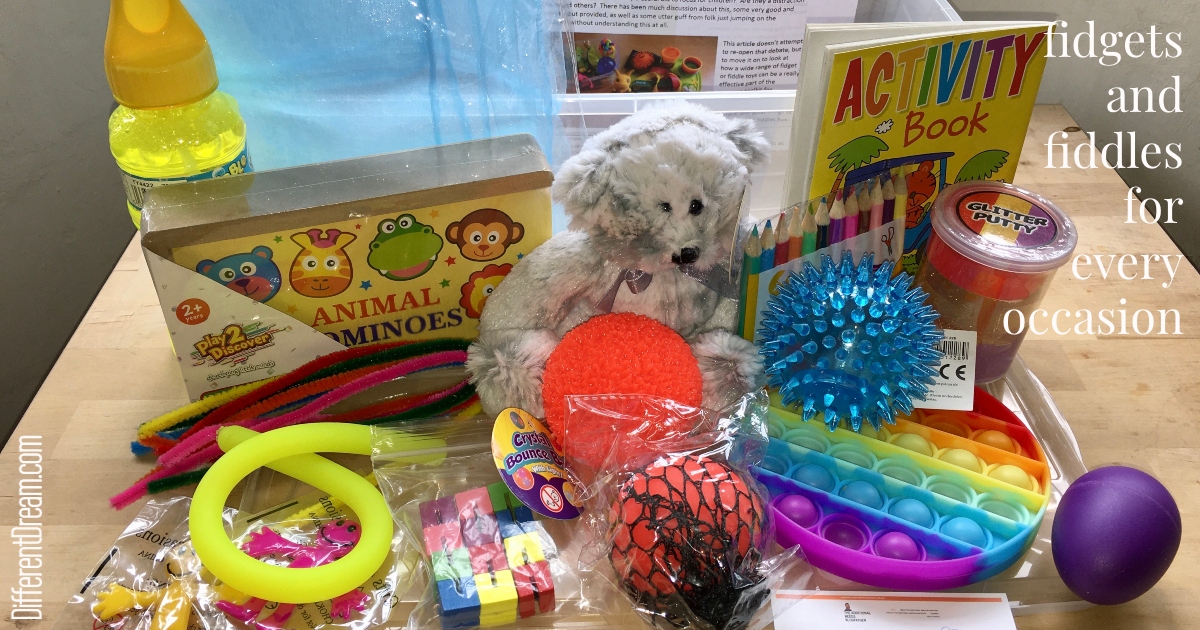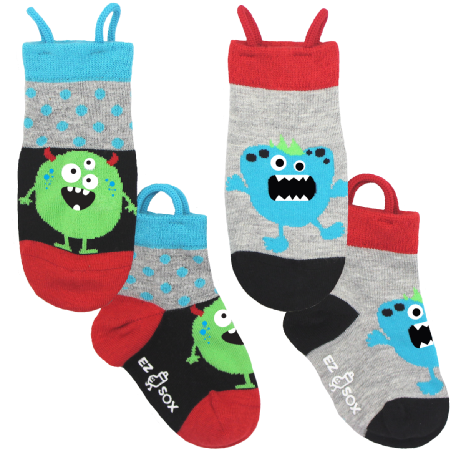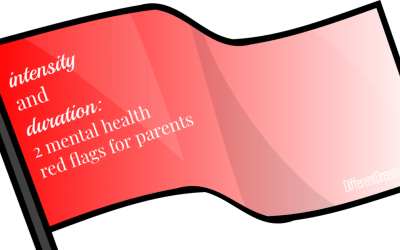Meeting Sensory Needs with Fidgets and Fiddles

Meeting sensory needs with fidgets and fiddles is one way to make church events accessible and welcoming for children. Guest blogger Mark Arnold is here to help you better understand sensory needs and to provide ideas about what to put in a sensory box.
All of us are sensory creatures. That means our senses can be under-responsive (hyposensitive), or over-responsive (hypersensitive) at times. Because of this we regularly have to balance our sensory systems, often subconsciously. This sometimes takes the form of sensory seeking behaviors, which try to activate the senses in any way possible. In children and adults this may result in feet, finger or pencil tapping, hair twirling, nail biting, or pen clicking.
In the absence of anything to support their sensory seeking needs at school or church, children may become distracted, disengage, or even use a peer as a fidget or fiddle item!
Meeting sensory needs with fidgets and fiddles offers a safe way to assist children and young people. What to include in a sensory kit can be up to program leaders, with input from kids and their parents, too. Here are a few suggestions to get you started:
Things to twist: a string of wooden twist and lock blocks or pipe cleaners.
- Things to stretch: stretchy snakes or stretchy people work well.
Things that squish and squeeze: modelling clay or putty, a soft mesh ball or a cuddly toy. - Things with weight: a bean bag, a weighted lap pad or a weighted.
- Things that click: pop or push sheets (similar to bubble wrap) or fidget cubes.
In addition, children sometimes need things to do with their hands while listening, ideally things themed around what’s been said. Items that can help them concentrate and focus could be a craft activity, coloring pages, or a jigsaw puzzle.
While meeting sensory needs with fidgets and fiddles, it is important that all children can choose something from the fiddles box. Initially, the excitement might be a short-term distraction, but the kids will settle down quite as the fiddles box becomes normalized.
For more examples of a fiddles and fidget box as well as a video I’ve recorded about them (scroll to the bottom of the page), visit: https://theadditionalneedsblogfather.com/fiddles-boxes/
Now, where did I put my stretchy snake…
Do you like what you see at DifferentDream.com? You can receive more great content by subscribing to the monthly Different Dream newsletter and signing up for the daily RSS feed delivered to your email inbox. You can sign up for the first in the pop up box and the second at the bottom of this page.
By Mark Arnold
Mark Arnold is the Additional Needs Ministry Director at Urban Saints, a leading national Christian children’s and youth organization. He is co-founder of the Additional Needs Alliance, a national and international advocate for children and young people with additional needs or disabilities. Mark is a Churches for All and Living Fully Network partner, a member of the Council for Disabled Children and the European Disability Network. He writes an additional needs column for Premier Youth and Children’s Work (YCW) magazine and blogs at The Additional Needs Blogfather. He is father to James, who has autism spectrum condition, associated learning disability, and epilepsy. To find out more about how Mark’s work can help you, contact him at: marnold@urbansaints.org or @Mark_J_Arnold
Subscribe for Updates from Jolene
Related Posts
2 Mental Health Red Flags for Caregiving Parents
These 2 mental health red flags for caregiving parents can be used to assess whether it’s time to seek treatment for either a parent or child.
Love Is a Child’s First Language
Love is a child’s first language. By understanding attachment theory and stages of cognitive development we can better speak their language.
EA/TEF Is All in the Family for this Mother and Son
Not many moms can say EA/TEF is all in the family, but Corrin Ponte can. Today she offers advice from a unique vantage point.






0 Comments